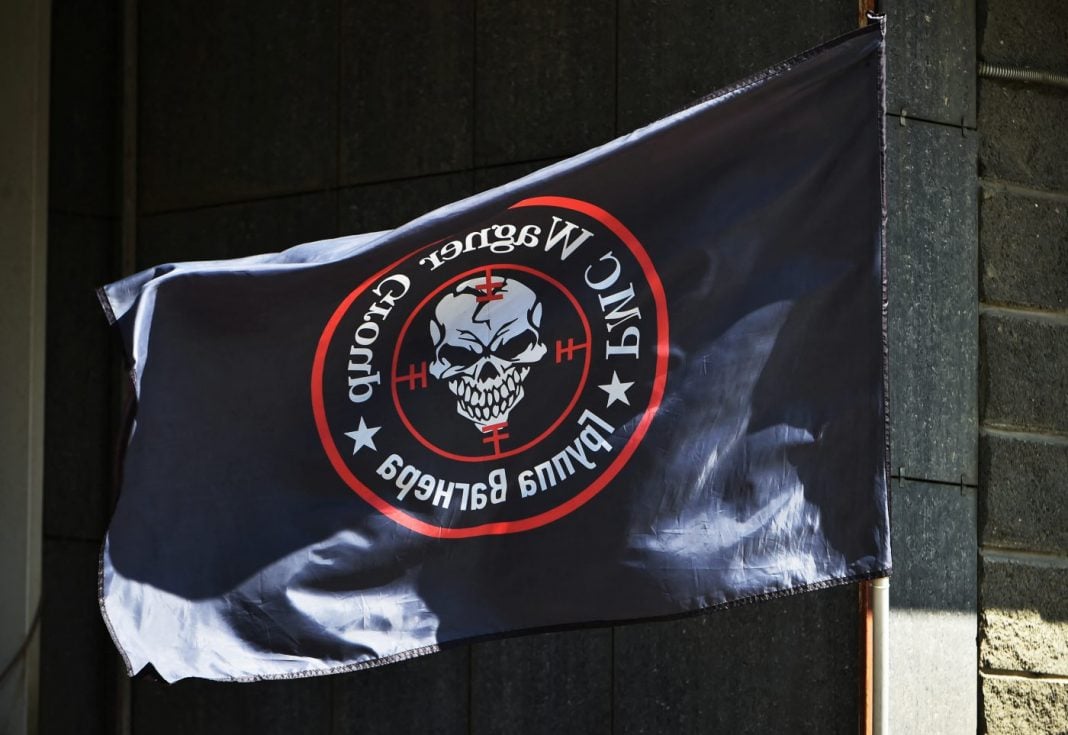Estonia responds to Russian trolling with ridicule.
By Edward Lucas, CEPA
Russia’s Wagner Group mercenaries are not the kind of people you want to see on your doorstep. So it was unwelcome news in Estonia this Sunday when border guards spotted the group’s distinctive flag (skull and lightning bolts on black) on a Russian patrol boat on the Narva river. All the more so because Estonia is battling lazy journalism that depicts its eastern border city as a likely Russian target.
An easy response would have been to sound the alarm. Wagner mercenaries are dangerous criminals, used by the Kremlin for mischief abroad. Six of their hired proxies have just been jailed for arson in Britain. Ukrainian and Moldovan police last week raided 70 locations, seizing weapons, equipment, and uniforms, as part of an investigation into 654 war-crimes suspects linked to Wagner and another private military company. If Russia were going to try some kind of cross-border stunt in the Baltics, it could well use Wagner. So flaunting the group’s presence is a clear psychological provocation. It follows other recent episodes, including drones over a military barracks in southern Estonia (currently hosting US Army troops); the pop-up presence of men in unmarked green military uniforms on a border road used by Estonians that briefly crosses Russian territory; and the more serious use of smuggling balloons to close Lithuanian airports.
But Estonia did not react with outrage, conspicuously shadow the boat with drones, warn locals to stay away from the riverbank, raise its alert levels, rush troops to the border, or ask Nato allies for help. That would have played into Russia’s hands. A likely next step for the Kremlin would have been to deploy more boats and to boost other signs of Wagner’s presence on the border. When you see that your adversary is alarmed, you exploit it.
Instead, Estonia responded with mockery. A foreign ministry post on social media asked, “is Wagner marching on Moscow again, or starting with St. Petersburg this time?” That was a neat reminder of Wagner’s other core competence: disloyalty. Only two years ago, under the leadership of Yevgeny Prigozhin, the group launched a coup against Vladimir Putin. It failed (after some startling early successes) and Wagner was supposedly brought to heel; Prigozhin’s plane blew up in mid-air a few weeks later, taking him and his Nazi-sympathising sidekick Dmitry Utkin to a fiery destination. Wagner is like a half-tamed attack dog: useful for intimidating other people, but not an entirely comforting presence at home.
The pushback counters attempts by Russia and its western echo-chambers to delegitimise the Baltic states as “tiny” and “ex-Soviet”. Instead, it highlights Putin’s fragile legitimacy, revealed by the startling early success of the mutiny. Margus Tsahkna, Estonia’s foreign minister, drove that point home, noting that the sighting “only confirms the fact that Russia’s ‘iron’ system is fracturing”. This idea of Putindämmerung, the twilight of the Putin era, is worth promoting. The Russian leader is not immortal, any more than his country is invincible. A final element in Estonia’s response was to point out that the boat is hardly intimidating. Sven Sakkov, the ambassador to London, noted that naval parades normally feature larger warships.
Other countries facing Kremlin provocations or Western media myth-making should take note. The speedy Estonian reaction switched the narrative, from a potentially damaging “Wagner menaces Narva” to a positive one: “Estonians mock Moscow”. It also underlined another important point: vigilance. The Baltic states notice anything that happens, anytime, anywhere near the border. This helps rebut another media myth, that these defenceless, complacent countries would be a pushover.
National security requires many things. A sharp sense of humour is one of them.
By Edward Lucas, CEPA
Edward Lucas is a Senior Fellow and Senior Advisor at the Center for European Policy Analysis (CEPA). He was formerly a senior editor at The Economist. Lucas has covered Central and Eastern European affairs since 1986, writing, broadcasting, and speaking on the politics, economics, and security of the region.
Europe’s Edge is CEPA’s online journal covering critical topics on the foreign policy docket across Europe and North America. All opinions expressed on Europe’s Edge are those of the author alone and may not represent those of the institutions they represent or the Center for European Policy Analysis. CEPA maintains a strict intellectual independence policy across all its projects and publications.





